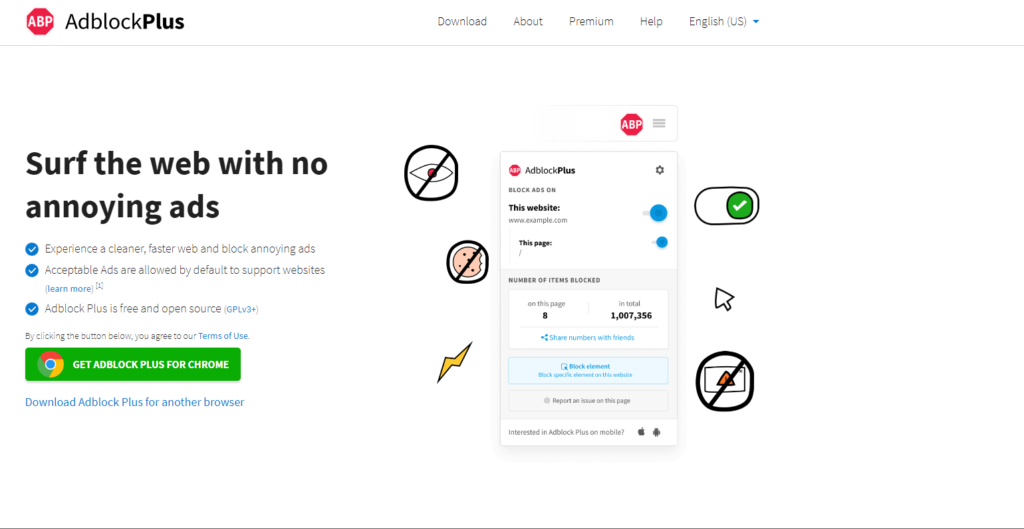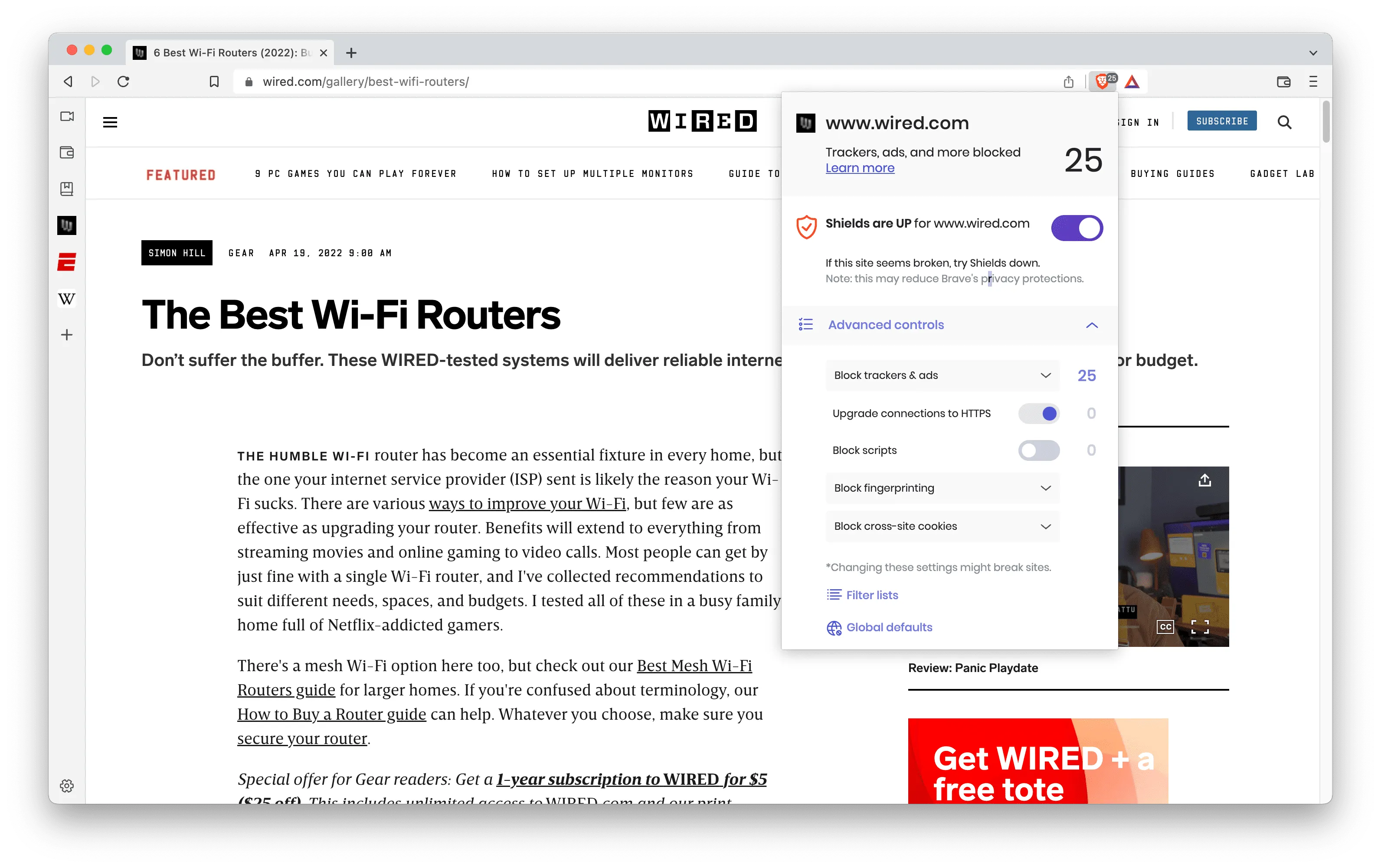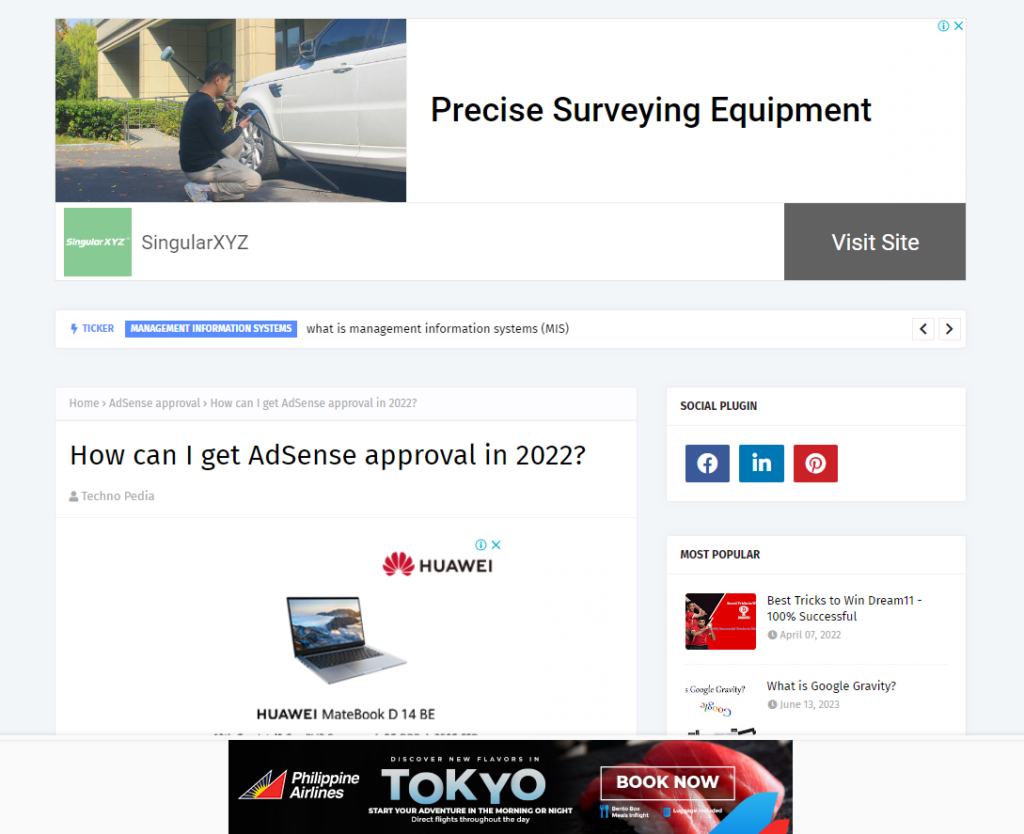A time before the ad-ternet
Take a step back in time and explore the fascinating history of online ads. From the first banner ad to the evolution of today’s digital marketing landscape, get a glimpse of a time before the ‘ad-ternet’ became a cornerstone of internet life.
If you’re older, you might remember a time before the internet from experience. For others, you might have to imagine a time before smartphones, before instant global information access, before things like cable, DSL, and dial-up. Picture a world without underwater cables and satellite networks seamlessly connecting us under one incredible umbrella.
Dreaming of a World Connected by the Internet

Then, once you’ve arrived at this time before the internet, I want you to imagine that you fall asleep and have the most amazing dream. In this dream, or vision perhaps, you see the world that would be…internet and all. You can foresee the immense power of the internet. Individuals have instant access to anything they can imagine and anything their hearts desire. Food, shopping, books, and more are all at your fingertips. Instant access to hordes of knowledge from every corner of the globe. The ability to author your own content and share it with anyone at the click of a button. Buy, sell, trade, barter, build… The possibilities are endless.
This is the dream of the internet. Free, open, and available. A source of knowledge and power accessible to any human on the planet.
Awakening the Vision: Building the Internet Dream
Now, you wake up, energized and determined to build this brilliant vision. You meticulously craft out the idea, you plan out every move, and you send your plan into production. The hired company promises to fulfill your dream by building your internet vision’s MVP.
Immediately, they start setting up infrastructure, developing technology, and engineering major platforms for your envisioned internet. After years of hard work, they are finally ready for the big reveal. You enter a massive conference hall, and all of the major stakeholders are there. The room you enter is dark except for the far corner. Waiting for you there is a chair and a brightly lit computer monitor. You log in.
Slowly you walk up to the gathered crowd and wait with bated breath. You move the mouse and are greeted with these words on the home screen:

Welcome to the Ad-ternet!
You raise your eyebrow, slightly confused. “Why would they call it that? That’s not what I saw in my vision.” Below the welcome text is a search bar beckoning you to enter your first search. You oblige:
“Who is the current president?”
A loading screen appears and then your speakers begin to blare with the sound of apes: “Oo-oo-oo-oo!”, “Hoo-hoo-hoo!” and three cartoon apes pop onto the screen jumping around. There’s a countdown timer on the screen:
3:32/4 (2 ads remaining)
The monkeys continue to hoot and holler for another 1 minute and 32 seconds. You watch horrified as one ad ends and the next begins. The next ad is about underwear liners… Finally, it ends. Your search results display: Joe Biden, President, United States
You look up at the gathered crowd, “What the hell did I just witness?”
The crowd lets out a collective gasp and the project lead speaks up, “This is what you asked for, it’s the ad-ternet”.
Your personal Internet experience on the ad-ternet
Let me ask you a question. Is this how you experience the internet? Ad after ad, pop up after pop up.
Are sales pitches pursuing you?
How about sign-up requests?
Are your clicks luring you into traps with false promises of instant wealth or hair regrowth?
This is what most people have come to expect from the Internet, often without realizing the extent of their “ad-ternet” experience. What started as a vision of unimaginable knowledge and power at your fingertips has turned into a constant barrage of advertisements and enticements. But I’m here to tell you that this is not the optimal Internet experience, and there is a better way.
An ad-free experience
The vision I described earlier, is a vision for a better internet. I want you to notice that I didn’t mention ads. That’s because, in a perfect world, I don’t believe ads would exist. At a fundamental level, when you search on the internet you should see results which are the most relevant to your search!
Using a website shouldn’t mean being bombarded with ads either. Instead, you should see high-quality content and have the ability to purchase products that you choose from these websites. However, most websites cover their costs by blanketing ads wall to wall on every screen. This makes for a terrible experience where you as the user are constantly fighting against an overwhelming tide of ads in every form. Pop-up ads, exit ads, scrolling ads, sidebar ads… the list goes on and on… But what if I said that you and I probably experience the internet in vastly different ways?
Let me tell you how I discovered that there were two worlds.
One world is filled with ads and perpetual torment… and another is filled with quality content free from ads and distractions.
A world of ad-based torment

I’ve already described this first world because it’s the default, standard, modus operandi of the base internet as well as the tools that we use to browse and scour the web. Let’s say you use the following tools (it’s going to sound like I’m picking on Google because I am):
- Google Chrome Web Browser
- Google Search
- Andriod with Youtube App
If you have this toolset, you’ll immediately have the Google search bar when you open Chrome to browse the internet, but if you scroll down, you’ll also have google news. A news feed populated using your search history, as well as with random ads. This is a targeted news feed that can pull in local news, as well as ads based on a tracking cookie that follows your Google account across the web. Sounds private huh?
Navigating the Ad-Infested Internet: A User’s Dilemma
Next, you do a search. The first results you see are the most relevant to your search, right? Wrong. Most of the time you’ll be served an ad directly, but sometimes it’s more subtle and Google will serve you a business that has promoted its listing first on the page without even calling it an ad. Now, click on that ad and you’ll enter someone’s website which(if it’s a content website) is sure to be filled with additional advertisements. What if it’s a service website? Well, then you are sure to have an even worse experience being hounded by pop-up after pop-up trying to capture your email. Try to leave… now what? You’re served with an exit ad?
“Are you sure you want to leave this page? You haven’t given me anything yet!!!!”
Ok, you say. That’s all well and true, but I love my youtube app. How can you complain about that?
Well if the Youtube app isn’t a cesspool then I don’t know what is. Open that app and click on a video. You’ll be greeted with 1 – 3 ads which can total 30 seconds or more… before you can watch that 3-minute video you clicked on. Don’t like the current video? Well, change it 10 seconds in and be greeted with another 1 – 3 ads before you can watch that one. Want to skip ahead in a long video…? Here’s an ad. Wow! What a terrible experience!
It’s not just Google that does this. Its EVERYONE. Ads are all over the Internet and most people are so used to them that they just go with it… Let me share with you my internet experience and how you can radically change your personal experience too.
A quality ad-free internet experience
So what’s the alternative to this dystopian ‘ad-ternet’? That’s where ad-blockers come in. Ad blockers come in many shapes and sizes and can have varying levels of success in preventing ads from reaching your screen. Let’s dive into a few options that will blow your mind and change your browsing experience forever.
Ad Block Plus
If I think back far enough, I can remember a time when I experienced the internet the same way as you do, but I have to go all the way back… back to the time of dial-up to remember the last time I had an ‘Ad-ternet’ experience. I used to get the popups, the in-site ads, you name it, and as I recall it was quite the annoying experience!
I don’t remember exactly the date, but I do remember the context for how my internet experience started changing… back in the day, my brother and I were helping people to remove viruses from their computers, and I’m not talking about a little virus that you can wipe out by restarting the computer. I’m talking full-blown infections usually caused by downloading less than scrupulous “content” from the internet. (If you didn’t know, downloading content from untrusted sites online is the most full-proof way to bag yourself a virus).
When we’d go to run our virus-removing software from these computers most of the time we’d encounter pop-up after popup for all manner of nasty things. Gambling pop ups, adult content, additional viruses… if you can think of something nasty it was on there. After a few hours, assuming it was a solvable case using these methods, we’d usually get all of the viruses knocked out. Though, occasionally the issue would be so nasty that it would require a full HDD/OS wipe and reinstall. For the less technical savvy, like my wife, this is way more than “turning it off and turning it back on again”.
While going through this process, the danger of online popups became more and more apparent, and eventually, I stumbled across a solution.
Ad Block Plus or ABP for short.

Ad Block Plus was a complete game-changer. All of a sudden the Internet went from the ‘ad-ternet’ to an ad-free utopia. The ad’s blocked counter on my screen just kept going up. First, it blocked one ad, then another, then another after that. Ad block plus was easily blocking 1,000 ads a day and my internet experience was forever changed. ABP is still an amazing plugin to this day and you can easily download it from the plugin store on any Chromium browser and start reaping benefits right away. It blocks ads left and right, from popups to Google search ad placements, and more. It’s an amazing tool. I’ll write an additional article on ABP alone later.
It only gets better though. Currently we have way more tools, than in years past, to utilize aside from just ad block plus.
Block ads with Brave Browser
Brave browser is kind of the new kid on the block, and I’ve been singing its praises. It does have some downsides, but we can discuss those in another article. Instead, let’s talk about the amazing power of Brave Ad Blocking.
First of all Brave, like ABP, is free to download and you can start using it today. It’s an amazing web browser built on top of Chromium(open-source Chrome). So it can do all of the things your current browser can do… except that it also has superpowers.
Once you’ve installed Brave and started using you’ll immediately notice the difference. Even if you don’t install ABP, the built-in powers of Brave will start removing ads everywhere you go. As a matter of fact, here are the current stats that my PC browser alone shows me in terms of ads blocked, bandwidth saved, and time saved… When you open Brave for the first time you’ll be greeted with these same metrics and soon you’ll see them shoot through the roof.

Brave Browser: Ad-Free YouTube and the Trade-Offs
One of my personal favorite ad-blocking features of Brave is its ability to completely dismantle Youtube ads. When you watch Youtube through your Brave browser you won’t get a single ad on any video, except for of course the in-content ads, which can be easily skipped or watched if you prefer. This change takes youtube back to a simple time and puts it in a state that is actually usable. Currently watching youtube via the youtube app will have you feeling like you are watching legacy television and getting 15 minutes of the show per half-hour of commercials.
On top of doing an amazing job blocking ads, Brave has many other great features which I’ll discuss in another article, but from my perspective, the ad-blocking powers are enough to make this worth using right away.

I will mention with Brave that there is a trade-off. Open Brave and you will get served with a giant background ad, usually sponsored by the Crypto of the Day or some NFT company. Since I don’t support NFTs or pop-up Crypto schemes, I avoid these ads altogether. Additionally, if you scroll Brave News you’ll also get some Ads. Most of these are done in a way that is private and non-invasive, however, they should be mentioned in any case.
Ad Guard(DNS Blocking)
Quick disclaimer here. I don’t personally use DNS blocking for ads, but I’ve heard wonderful things. Personally, the free choices I’ve laid out above are plenty for me. but because the idea of blocking ads via DNS is pretty cool I thought I’d leave a quick blurb about this as well.
Ad Guard works by blocking ADS before they even reach you by watching the requests as they come in. It checks all requests versus a list of known ads, malicious sites, and more. By doing this at the DNS level it can prevent the ads or malicious content from ever hitting your machine. This is a super powerful tool that also serves as an additional firewall of sorts protecting you and your family from ever seeing ads or unwanted content.
Ad Guard has a free service for up to 5 devices and will work with up to 300k monthly requests. After that, they do have a paid family plan that runs $20 a month.
Let me know if this method of ad-blocking is one you would like me to test out more, and if so, leave a comment below.
You can check out ad-guard here: https://adguard-dns.io/
The case for advertisements
I want to throw a caveat in here. Not all advertisements are a bad thing and I don’t want you to think otherwise. The battle here is against ad tracking, targeted ads, invasive popups, and ads that waste your time.
As recently as 2007, the average person saw about 5,000 ads per day (clario.co), ranging from simple text ads to complex video ads. In 2012, research on eye-tracking indicated that an average internet user views ads for about 6.58% of the time they spend online (miratech.com). To think of it another way: that’s about four minutes out of every hour. Considering that the average person spends about 59 hours a week online (audacy.com), they spend up to four hours watching ads during that time – whether they want to or not.
Invasive, targeted ads waste your time. That much is true. This, however, doesn’t mean that you cannot display ads. There are many valid reasons why someone should display ads on their website.
Websites need ad revenue in order to provide ‘free’ content
There are many content-focused websites that are able to support themselves and provide the content without directly charging the end-user or customer because they use advertisements to generate revenue. This can be beneficial for you the ‘reader’ or ‘consumer’ because you don’t have to pay a $1, $2, or $10 subscription fee for every website and blog that you use. Instead, the owner can pop up a few advertisements on the site and create an instant source of revenue.

In addition to the instant revenue, the revenue they can make is directly proportional to the eyeballs they can draw so there’s an instant synergy for the owner in terms of business model. They create a site, create content that draws users in, market their content, and revenue starts coming in. Granted, nothing in life is that simple, but in its essence that’s the model.
Site owners view this as a win/win and in some cases it surely is. The issue with this model though is that the owner is often incentivized to promote more and more ads in order to generate more and more revenue. Then they get into unsavory marketing tactics in order to get you to stay or come back. This is where things really go south for this model in my mind. But nonetheless, it’s the owner’s right to place the ads, and it’s also the user’s right to dismiss them summarily.
Ad revenue generates Monthly Recurring Revenue
Monthly Recurring Revenue or MRR is another benefit of using ads on your site. I mentioned this a bit earlier, but when placing ads you generate revenue based on your view count. If you know the amount you’ll make per ad view and you know how many visitors visit your site each month, you can accurately forecast your MRR.
Why does this matter? A few reasons:
- You’ll know how much you will make each month in profit (assuming fixed costs)
- You’ll know that if you drive more traffic to your site, how much profit that will result in
- MRR is the number a buyer will look at to determine your blog/company’s value.
In my mind all of these are important, but the last one is most relevant to business owners. Business owners need to know the value of their business or to have a way to estimate their value. If you can generate MRR in your business that is consistent year over year, then when a potential buyer comes to look into your business, they will be able to have certainty about how much your business makes each month.
That’s not to say that you cannot create MRR in other ways, however, this is one of the easiest ways to make MRR, especially on a blog. Otherwise, the user may need to have a product, clients, and a much more involved business plan in order to generate that same amount. Popping ads on your site is just a much more convenient way to get there and it creates an instant exit plan for the aspiring seller.
In content ads(non-invasive)

Many favorite YouTubers now incorporate ads within their content, often with awkward transitions, but occasionally I have seen content creators get quite cheeky with this. However, since they must make an effort to create these ads, they appear more authentic and less off-putting. Let’s explore the advantages of in-content ads.The content cannot be demonetized
I’m sure this isn’t always true, as a sponsor can draft an out clause, but generally speaking, it’s much simpler for YouTube to pull your monetization on a video than for each of your individual sponsors to remove all of their sponsorships at once. This means that even if you do something that Big Brother does not like and your content does get demonetized, you’ll still be able to fall back on sponsorships and relationships that you’ve built with the companies who sponsor you.
You control the sponsor
By choosing the sponsors for your ads instead of letting a Google algorithm choose for you, you have to have a conversation with and build a relationship with the sponsor or the advertiser. This means that you control what you selling to your audience. You get to choose the relationships that make the most sense for your company and for the products that you want to advertise to your readers or viewers.
Do you want to be the guy who advertises for adult diapers? Perhaps if you run an elderly care center.
Do you want to be the person who advertises for a crypto pyramid scheme? Perhaps you’re a sleazy finance YouTuber that cannot resist the paycheck.
If you don’t fall into those categories, then having the opportunity to choose your own sponsors and what you are selling to your audience may be a good fit!
Final Thoughts: Ad-ternet
One of the amazing things about the internet is that it still remains open and free to use. You can also control how you use the Internet and for the most part, you can control what you see on the internet. If you choose to use the internet without any modification then you live in the world of the Ad-ternet. But if you’re like me and you find the Ad-ternet to be invasive on your time, your privacy, and your psyche, then there are tools to help you escape.
Steps
The first step towards more internet privacy is to ditch Chrome and start using Brave. It has all of Chrome’s features as they are both built on the same engine, it just adds in all the bells and whistles to help you maintain your privacy online. It will blow up ads, speed up your internet experience, and help prevent your brain from blowing up with context overload.

If switching browsers is too big of a first step for you, then you can take a smaller step to install the Ad Block Plus plugin. This will give you most of the ad-blocking benefits of Brave without the commitment.
Finally, if you love watching YouTube, I suggest ditching the YouTube app and watching the content from the browser on Brave or using an app like New Pipe. Either will give you a much more streamlined and ad-free experience.
So get back out there, blow up some ads, and enjoy the Internet the way it should be instead of the dystopian Ad-ternet we’ve all been sold.


Pingback: 7 simple steps to online privacy - Personal Privacy Online